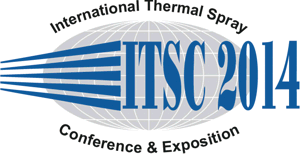
|
3720 |
|
Friday, May 23, 2014, Hall H2 2:40 PM Cold Gas Spraying 4 |
|
Disorder and bonding in cold spraying of Fe40Al |
|
Nuria Cinca* / University of Barcelona, Spain Frank Gärtner/ Helmut Schmidt University, University of the Federal Armed Forces Hamburg, Deutschland Alexander List/ Helmut Schmidt University, University of the Federal Armed Forces Hamburg, Deutschland Josep Maria Guilemany/ Thermal Spray Centre (CPT) - Universitat de Barcelona, Spain Thomas Klassen/ Helmut Schmidt University, University of the Federal Armed Forces Hamburg, Deutschland |
|
Transition metal aluminide intermetallics are known to have promising properties for high temperature applications. Some attempts have been performed by conventional thermal spraying, but due to oxidation the coatings not achieve the properties of respective bulk materials. In contrast, the oxidation of the spray material can be prevented by cold spraying. Recent results demonstrated that dense Fe40Al coatings can be processed by cold spraying within a quite narrow high end parameter range. For such ordered alloys, the increase of strength with temperature makes it difficult to handle bonding mechanisms in terms of thermal softening to achieve conditions for adiabatic shear instabilities. Thus, it is of interest whether local disordering could play a role in bonding. X-Ray-diffraction of the feedstock powder and the cold sprayed coatings reveal the superlattice peaks and thus ordered structures for both. However, according to high resolution of FIB-TEM analysis, locally disordered structures could be detected at some of the internal interfaces. That enlightens the possibility of deformation induced order to disordered transformation under the high strain in cold spraying. Further details were investigated by means of a magneto-optical Kerr effect (MOKE) analysis and Magnetic Force Microscopy (MFM) on the cross sections of coatings, taking profit of the ferromagnetism that arises in this intermetallic compound when it becomes disordered. Such method has been previously used for the characterization of magnetic sub-micrometer structures for bulk FeAl but by applying nanoindentation tests. In the present case, it allows us to examine the order-disorder changes between particle boundaries and particle cores. |